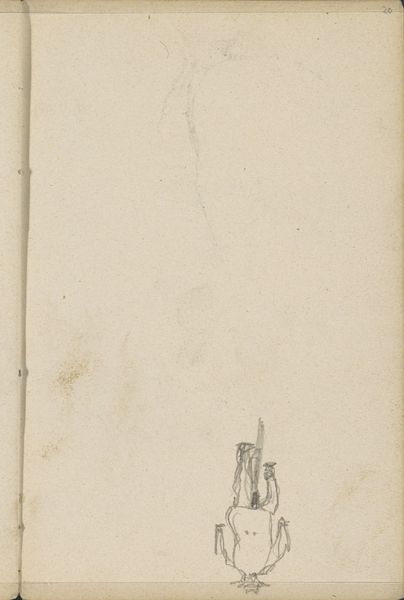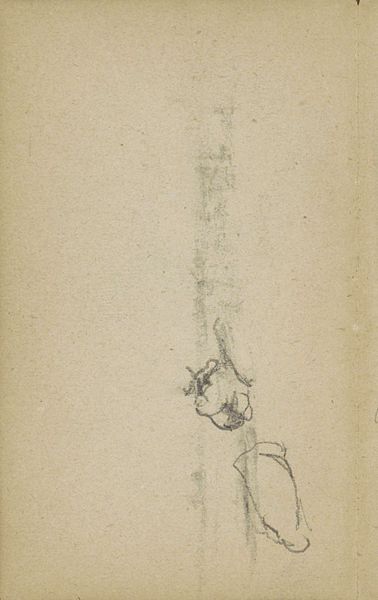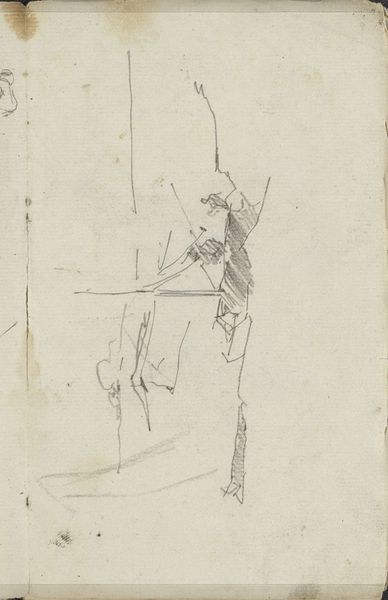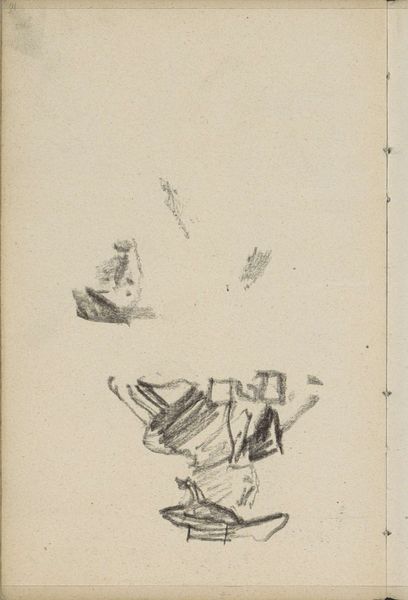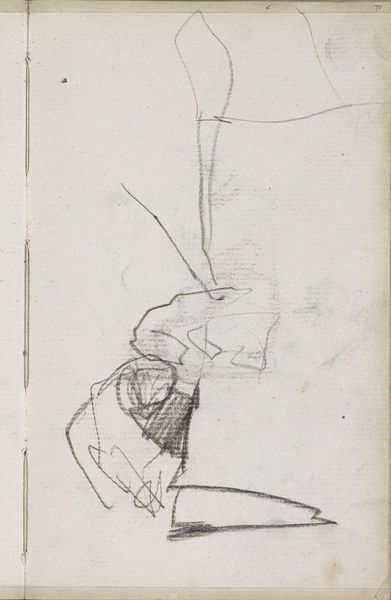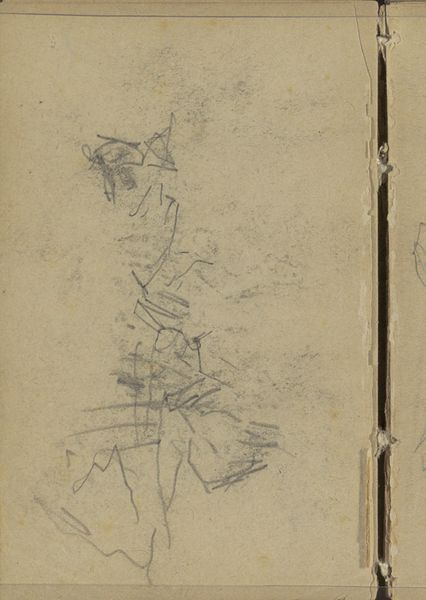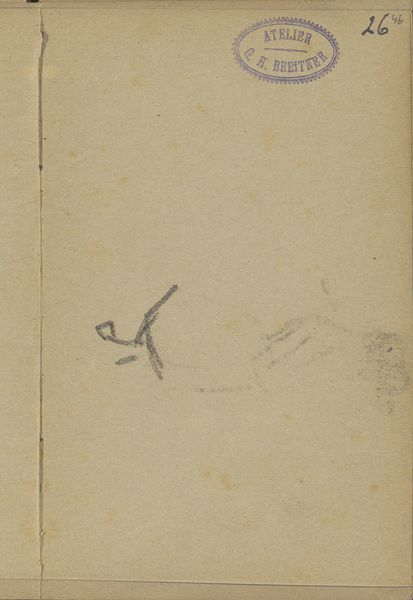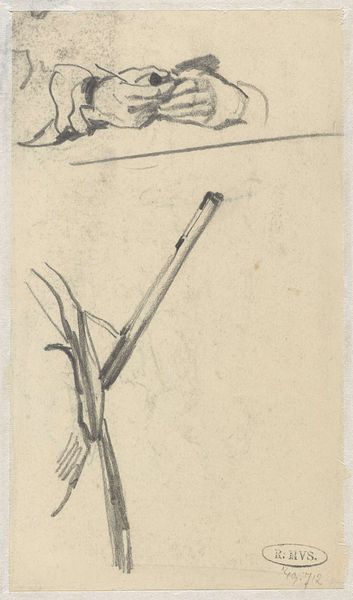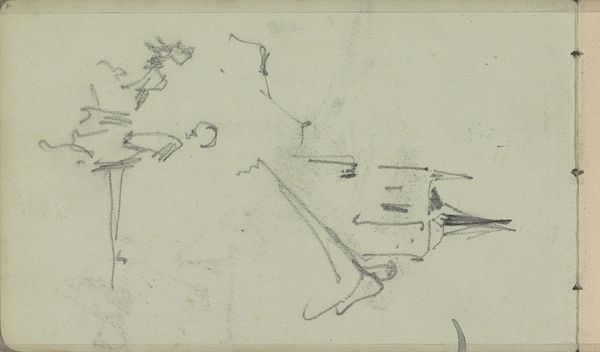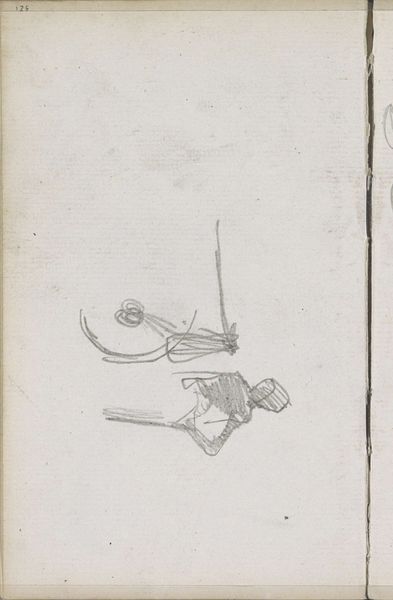
Copyright: Rijks Museum: Open Domain
George Hendrik Breitner made this drawing, Paardenhoofd, with black chalk on paper. He was working in Amsterdam at the end of the 19th Century. The image is part of a series of studies of working horses in the city. Look at the way the horse is positioned in the lower left of the frame. Much of the paper is left empty. What does this emptiness convey? Breitner was interested in capturing the everyday life of the city, and his work often focused on working-class subjects. You can tell he's interested in challenging academic artistic traditions through his choice of subject matter, favoring the gritty reality of urban life over more idealized or historical scenes. Breitner was associated with the Amsterdam Impressionism movement, which sought to capture fleeting moments and sensory experiences. To understand this drawing further, we might look to archival materials, such as photographs and newspapers, to learn more about the role of horses in Amsterdam's economy and culture during this period. The meaning of art always depends on its social and institutional context.
Comments
No comments
Be the first to comment and join the conversation on the ultimate creative platform.


